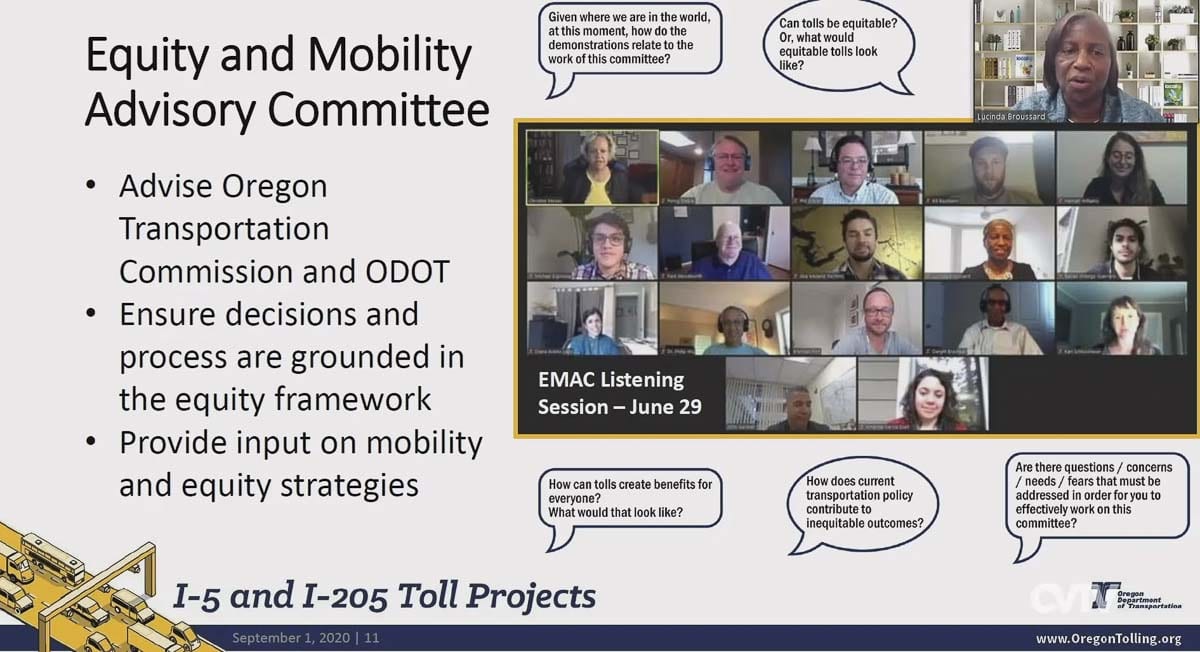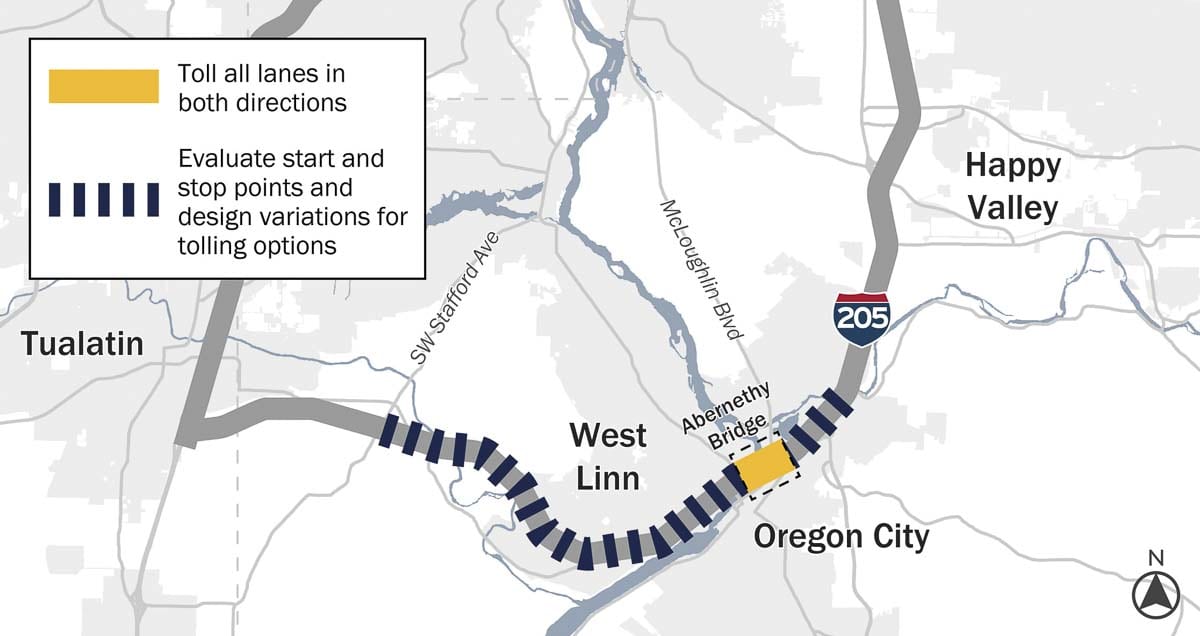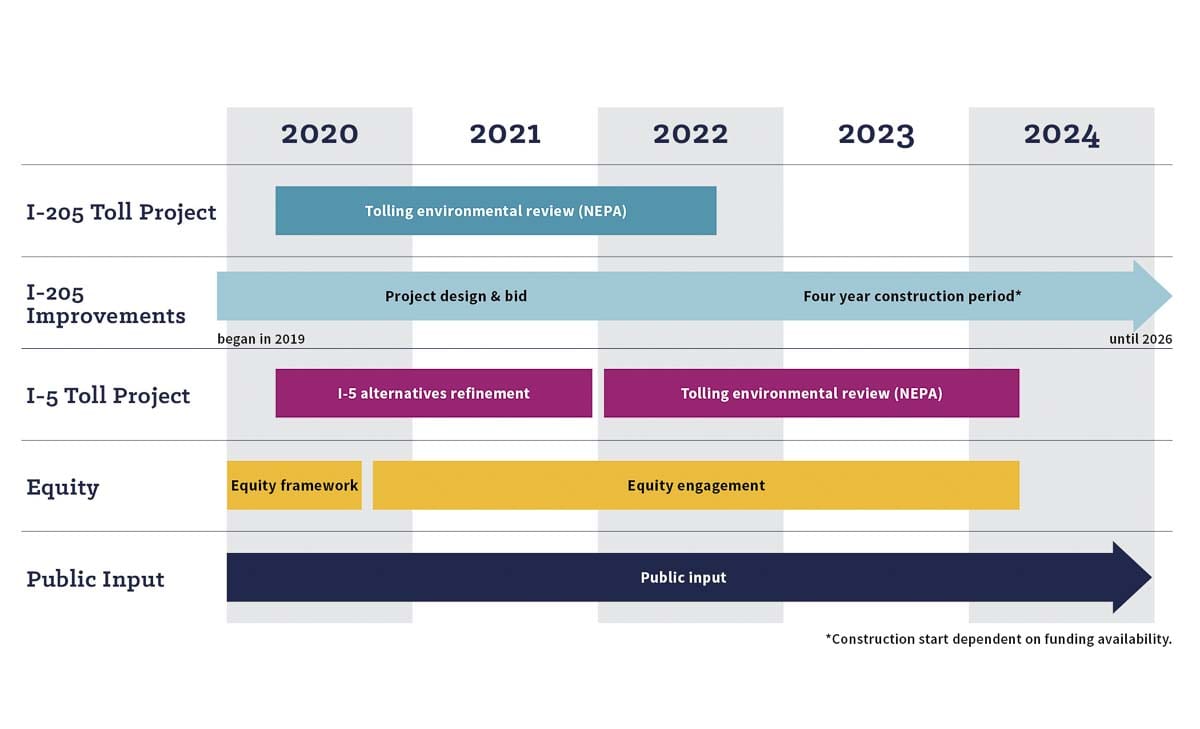The transportation agency calls this a first-in-the-nation approach to tolling a major highway
VANCOUVER — It may still be another four or five years before tolling comes to I-205 near Oregon City, but the process is already well underway.
At an update provided to the Southwest Washington Regional Transportation Council (RTC) during their monthly meeting this week, Oregon Department of Transportation (ODOT) officials said the current phase of the project is centered largely around equity.

“Equity is throughout this whole process,” said Lucinda Broussard, ODOT’s tolling program director, “basically laying something on top of this and saying ‘hey, what’s equitable for tolls?’”
ODOT has created a 15-member Equity and Mobility Advisory Committee, including three members from Southwest Washington, with the goal of engaging historically underserved communities to be part of the conversation around tolling.
“First in the nation. Nobody does this,” said Broussard. “We’re kind of the ones saying, ‘hey, when you’re designing, what does equity look like? How do you put equity into a program.”
The tolling program was born out of the Oregon Legislature’s 2017 “Keep Oregon Moving” bill, which committed hundreds of millions of dollars to addressing congestion in the state, and directed the Oregon Transportation Commission to pursue and implement tolls on I-5 and I-205 in the Portland region.
There is currently an ongoing debate on where revenues raised from tolling would be spent. The legislation adopted by lawmakers only required that it be used for projects to address congestion, though Broussard said there are discussions about whether revenues from tolls on a stretch of freeway should be used only for traffic improvements to that specific corridor.
The I-205 project will include widening the freeway between Stafford Road near the I-5 interchange and the Abernathy Bridge in Oregon City.

ODOT is in the midst of a 45-day public comment period on the I-205 tolling project, which runs through Sept. 16.
Tolls have often been criticized as a regressive tax, meaning they disproportionately impact poor communities. Hot lanes in the Seattle area, which require payment to use and increase in cost during times of heavy traffic, are seen as largely benefiting only those who can afford it.
Broussard says that’s why ODOT is especially keen on hearing from minority and underserved communities about how they feel tolling can work for, rather than against them.
“Equity exists somewhere, but we haven’t defined it,” said Broussard. “There isn’t even a base to start with.”

The equity process for the I-5 tolling project will begin later this year, Broussard said, and then an environmental review process will include more detail.
The I-205 tolling project is currently slated to reach a decision on a preferred alternative sometime in the next year, with rate setting in 2023, and implementation of tolling likely to begin in 2024.
For more details on both projects, visit ODOT’s Tolling Program website.




